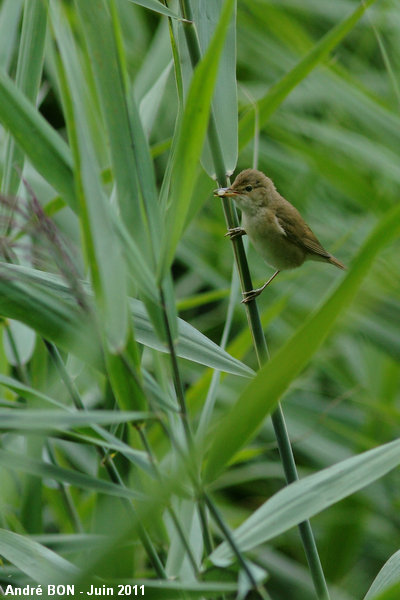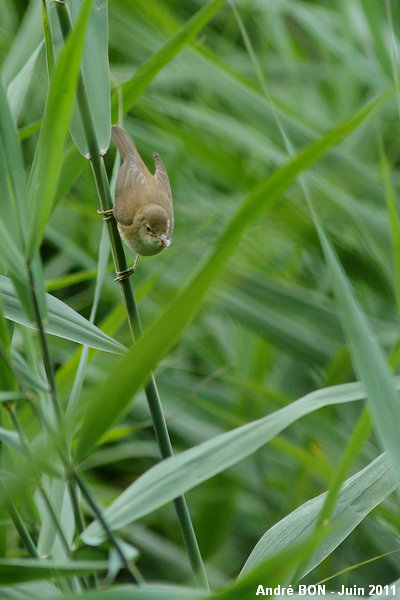

| Eurasian Reed Warbler (Acrocephalus scirpaceus (Hermann, 1804)) |


|
|
Scientific name: Acrocephalus scirpaceus (Hermann, 1804) Common name: Eurasian Reed Warbler French name: Rousserolle effarvatte Order: Passeriformes Family: Acrocephalidae Size: Body size: 12 to 13 cm; weight: 10 to 15 g; Wingspan: 19 cm. Habitat: Reed beds and high growing vegetation surrounding ponds and marshes. Food: Larvae, insects and spiders caught while moving through reed beds or sometimes caught in flight. They also feed on berries to accumulate energy before starting migration. Nesting: The nest is hanging over water, attached to reed stems. There can be two broods of 3 to 5 eggs per year (one single brood per year on the northern part of the range). Migration: Eurasian Reed Warblers migrate towards marshes of central and south Africa late August early September. They fly back northwards in April and are faithful to their nest places. Geographic area: Europe, missing in Scandinavia, western temperate Asia, Middle-East. |
The Eurasian Reed Warbler shows a uniform dark olive brown upper side. The rump is russet. The underside is a dirty white colour getting slightly buff-coloured on the flanks. There is a short cream eye stripe limited to the front and upper side of the eye. The bill is thin and lengthy. The upper mandible is dark grey. The lower mandible is orange near the base. There is a possible confusion with the Marsh Warbler (Acrocephalus palustris). This last one has a slightly shorter bill. The songs, the calls and the habitat are the best criteria to tell both species apart. The Marsh Warbler is mainly found in dense Nettle or Umbellifer beds or inside dense bushes. |
| [To know more about the Eurasian Reed Warbler] [Next picture] [Top] |

|
There was a lot of movement and noise in the reed bed, however I had to wait a moment before seeing one of the birds causing this agitation and shooting one picture. I cannot tell how many Eurasian Reed Warblers were there as I have only seen one bird at a time. |
| [To know more about the Eurasian Reed Warbler] [Previous picture] [Top] |

|
I have read that Eurasian Reed Warblers are not very shy birds, but seeing them is not very easy when they move inside the reed bed. I have only based this species identification, from the Marsh Warbler, on the habitat (reed bed). I am not skilled enough to tell birds apart based on their songs and calls. |